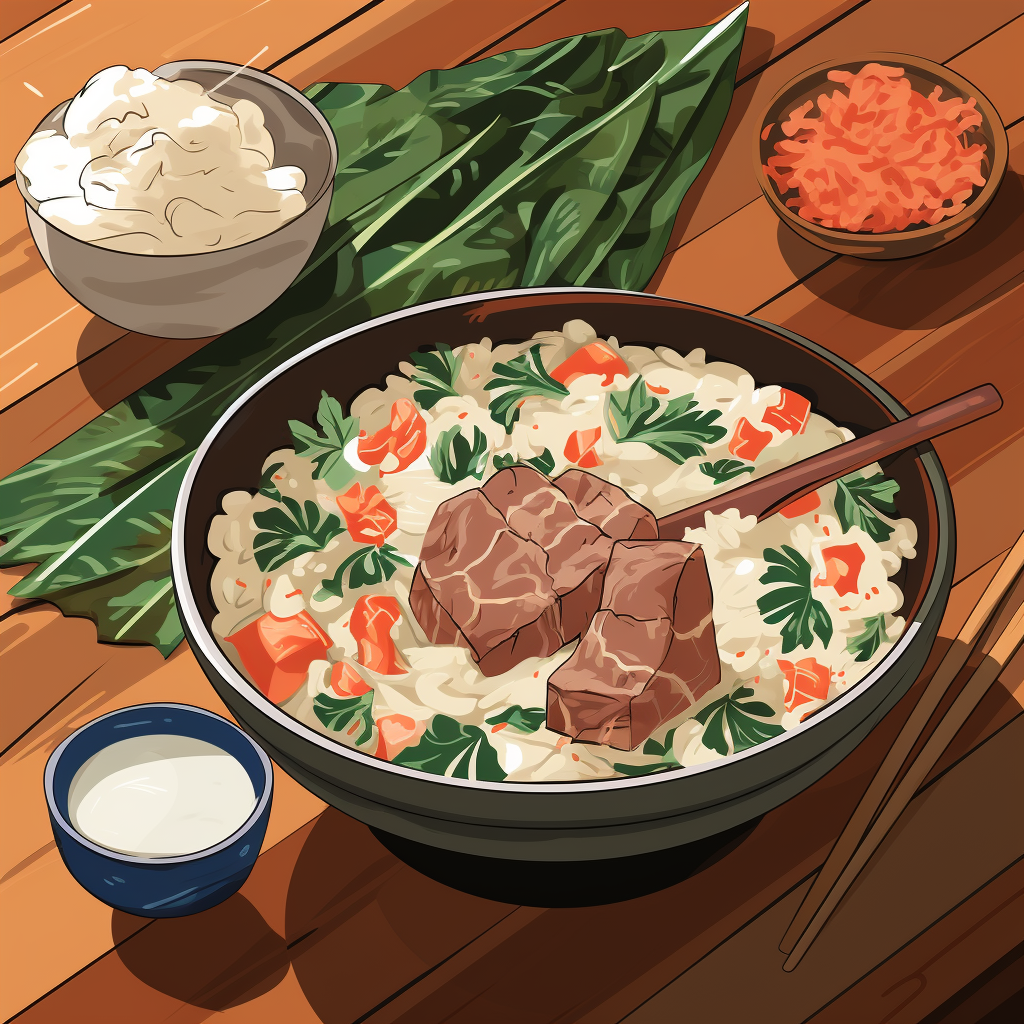Lu Pulu, a flavorful marriage of beef, spinach, and creamy coconut milk, is a signature dish of the Kingdom of Tonga. Slow-cooked to perfection in taro leaves, this dish encapsulates the soul of Tongan cuisine, reflecting the islands’ rich heritage and abundant natural resources.
Lu Pulu and Tongan Celebrations
Integral to feasts and celebrations, Lu Pulu is more than just a dish in Tonga – it’s a symbol of hospitality, community, and tradition. Whether it’s a birthday, wedding, or a significant national event, Lu Pulu’s presence signifies the importance of the occasion and the unity of those gathered.
Tonga’s Abundant Nature Captured in a Dish
The ingredients of Lu Pulu highlight the natural bounty of Tonga. From the locally grown taro leaves, which form a protective envelope for the dish, to the creamy coconut milk, every element speaks of the islands’ fertile soil and pristine waters.
Main Ingredients and Contemporary Additions
- Beef (brisket or stew cuts) – 500 grams, thinly sliced
- Taro leaves – 8-10 large leaves
- Spinach or Swiss chard – 200 grams, chopped
- Coconut milk – 400 ml
- Onions – 2, sliced
- Salt and pepper – to taste
Contemporary Additions:
– Some variations include tomatoes for added tang.
– Bell peppers or chili peppers can be incorporated for added flavor and heat.
Preparation Steps and Cooking Insights
- Layering Ingredients: On a large taro leaf, layer slices of beef, spinach, and onions. Season with salt and pepper, then pour a generous amount of coconut milk over the layers.
- Wrapping: Fold the taro leaves around the filling to form a tight parcel. Repeat with the remaining ingredients.
- Cooking: Traditionally, Lu Pulu is cooked in an underground oven known as an ‘umu’. But it can also be baked in a conventional oven. Place the wrapped parcels in an oven-safe dish and bake at 180°C for about 2-2.5 hours, until the meat is tender and flavors meld together.
- Serving: Once cooked, open the taro leaves to reveal the creamy, flavorful Lu Pulu. Best enjoyed with steamed rice or root vegetables.
Cooking Insights:
– If taro leaves are unavailable, banana leaves can serve as a substitute.
– To prevent the dish from being overly greasy, choose lean cuts of beef or trim excess fat.

The Legacy and Evolution of Lu Pulu
While deeply anchored in tradition, Lu Pulu has also witnessed adaptations as it traversed borders and generations. In Tongan communities overseas, especially in countries like New Zealand or the U.S., the dish has seen variations based on available ingredients, yet the essence remains unchanged, reflecting the resilience and adaptability of Tongan culture.
Concluding Musings
Lu Pulu is not just a dish but a narrative of Tonga’s history, community ties, and deep-rooted connection to the land and sea. As you savor each bite, you’re partaking in a centuries-old culinary legacy, experiencing the heartbeat of Tongan culture.
Frequently Asked Questions (FAQs)
Can I use canned coconut milk?
How can I store leftover Lu Pulu?
Is there a vegetarian version of Lu Pulu?
The rich tapestry of Tongan culture is vividly portrayed through its dishes like Lu Pulu. For more insights into the culinary wonders of the region, explore our comprehensive guide on Oceania cuisine.
